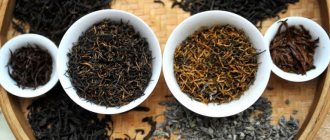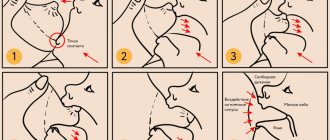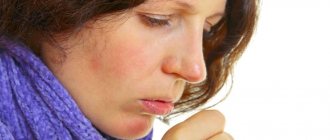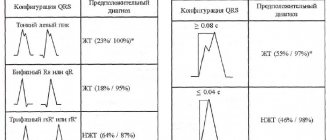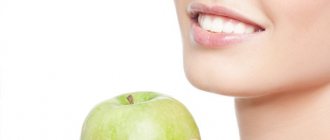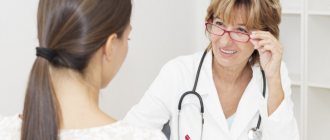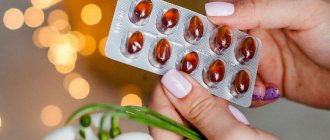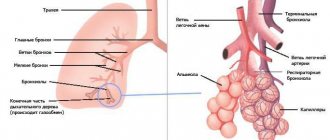general characteristics
Do you think that all plantains are the same? You are deeply mistaken! Biologists say there are at least 250 varieties of this plant. Most of them are “registered” in the temperate latitudes of the two hemispheres. But there are plantains that do best in the tropics. Also, not all plants in this family have the same life expectancy. Many of them are perennials, but there are also annuals. For example, in the Western Mediterranean, South America and western Asia, annual hare and Lusitanian plantains are found. But if you manage to see a plantain in the desert in northern Africa, then there it will be a shrub with linear leaves collected in a bunch and with capitate inflorescences. Biologists call this variety Moorish. Coastal birds have taken root in the Atlantic, South America and Europe. Some of them consider the shores of lakes, ponds and sea coasts their home, others feel more comfortable in regularly flooded places. Another amazing member of the family, the Bugiera, is found in the Andes in southern Peru, northern Argentina and Bolivia.
Content:
- general characteristics
- Beneficial features
- How plantain was treated in ancient times
- Modern use in medicine
- Benefits for the skin
- Benefits for the respiratory tract
- Several recipes from traditional healers
- Contraindications
- How and when to prepare
- Other uses
- What to cook from plantain
- Interesting Facts
Almost all varieties are wind-pollinated, although insects also play an important role in this process. Some varieties of this grass have attracted bees and flies. For example, they pollinate the lanceolate plantain. Interestingly, insects only land on inflorescences that still have pollen. By the way, some species of butterflies use plantains as food.
But no matter where the plantain grows, the ovoid leaves of this herb tend to hug the ground. Thanks to this structure of the bush, it is protected from damage - even if someone steps on it, the plant will not break. Another feature of grass is its ability to retain large reserves of moisture. And again, the grass achieves this effect thanks to the special structure of the bush - the soil under the leaves always remains moist. Thus, plantains survive even in the most severe drought and even where other plants die.
Plantain
Plantain belongs to the genus of annual and perennial herbs; rare, but subshrubs of the plantain family are found. Plantain grows in temperate and subtropical zones (sometimes in the tropics); about 250 species of this plant are known. It can be found along roads, in wastelands or steppes, in meadows and sands, even in weedy places. The seeds of many types of plantain contain mucilage and the glycoside aucubin.
Plantain and its medicinal properties are widely used in many countries in Asia and Europe. This plant is also called the "seven-veined fellow traveler" because it has vertical veins on the foliage. This name is even closer to it than the common one - plantain, since it prefers to grow not only near the road, but also asks all animals or people to be travel companions. Its ripened seeds stick as if glued to the skin of animals, shoes and clothes of people. But, nevertheless, its real name is this. This is largely explained by the fact that even the plantain living near a trail or near a road turns out to be more adaptable and grows well. For him, compacted and trampled soil is no obstacle.
In medicine and industry, flea and Indian plantain seeds are used. Flea and large plantain leaves are used for treatment, since they contain vitamin C, carotene and phytoncides. Infusions are prepared from the leaves and used as an expectorant. Plantain juice is used to treat gastritis and enteritis, as well as to improve digestion.
Beneficial features
This inconspicuous plant, which grows everywhere and is always literally under our feet, is in fact an extremely useful medicinal herb. Plantain is rich in many substances beneficial to humans. It contains vitamins A, , some amino acids, potassium, calcium, and phytoncides. Interestingly, plantain is a rich source of tannins. The concentration of these compounds in grass is almost the same as in oak. And the seeds of the plant are full of omega acids.
Description of the plant
The most famous types of plantain are lanceolate, sandy, and middle. Pronounced medicinal characteristics are inherent in flea plantain, and also to a greater extent in large plantain. Of these two types, the latter is in high demand.
Great plantain is a familiar herb to many people and is often considered a nasty weed. In Latin the name sounds like Plantago major. Found everywhere, excluding the Far North. Due to its beneficial properties, the plant has been cultivated in a number of regions.
Description of plantain:
- the shortened rhizome of the plant is covered with numerous thread-like roots;
- broadly oval petiolate leaves are combined into a rosette located in the root zone;
- finely grooved erect peduncles reach a height of 14-46 cm;
- four-membered miniature flowers are collected in elongated spike-shaped inflorescences of a cylindrical shape;
- The fruit is a multi-seeded capsule.
Compound
The beneficial qualities of the weed plant are determined by the diverse chemical composition of plantain, including carotenoids, mucus, iron, cobalt, and choline.
Present in the structural formula are phytoncides, polysaccharides, magnesium, iridoid glycoside aucubin, and retinol. Includes bitter, nitrogenous, tannin compounds, vitamin K, selenium. Acids were identified - citric, ascorbic, uronic.
How plantain was treated in ancient times
Plantain as a medicinal plant is mentioned in ancient Greek, Chinese, and Roman writings. The ancient Egyptians used it to prepare balms, ointments, resins, mixtures, and lotions. Many of these recipes have survived to this day along with ancient papyri. The beneficial properties of plantain were immortalized by the Sumerians with their cuneiform writing on clay tablets.
It would be strange if Chinese medicine ignored plantain. Back in 2006, this plant, along with more than one and a half thousand others, was included in the first Chinese book on medicinal herbs. Eastern doctors often used this plant to heal many ailments. For example, the Chinese used plantain decoction to remove blood from urine. And today this method of treatment has found its scientific explanation: plantain is an effective herbal medicine against inflammation in the genitourinary system. Another interesting way of using this medicinal herb in China is to improve male fertility and stimulate sperm production. But the Indians, who have already been mentioned, after meeting the plantain, also included it in the list of the most useful plants.
Residents of the American continent treated snake bites and facial neuritis with this herb.
The healers of Ancient India used about 750 plants for treatment. One of them is plantain. This herb was used as a medicinal remedy in Arab countries; Hippocrates and the ancient Roman doctors Aulus Cornelius Celsus and Dioxoride knew it. And in 1073, this plant was depicted in the “Selection of the Grand Duke Svyatoslav Yaroslavich.” It is worth saying that in Rus', plantain, as one of the most accessible plants, was used for a variety of ailments. Since the time of Peter the Great, this plant began to be supplied to pharmacies.
Psyllium seed husk
The husk is obtained by splitting the seeds of the plant. It is used for constipation, to treat skin irritations, and is widely used by Chinese and Indian doctors and healers to eliminate bladder problems. Constipation and hemorrhoids are treated with husks. The husk helps reduce blood pressure and restore the function of the cardiovascular system. The husk is rich in insoluble fiber - it is a mild laxative; the husk of the seeds contains alkaloids and amino acids.
The husk is used together with seeds as a thickener in cooking and cosmetology. When combined with water, it swells to form a glandular mass that is excellent at stimulating the gastrointestinal tract, ideal for relieving colon irritation and hemorrhoidal symptoms. The use of such a natural cleanser helps relieve toxins and reduces the risk of cancer.
The husk supports the proliferation of beneficial bacteria Lactobacillus acidophilus and bifidobacteria, recommended for normal intestinal functioning. It is included in fashionable diets: its property, which causes a feeling of fullness, allows you to lose weight. The medicinal husk should always be taken with water. You should drink about 6-8 glasses of water throughout the day to prevent constipation and bloating.
Modern use in medicine
Plantain has been successfully used in folk and official medicine for centuries in different countries of the world. The plant extract has many beneficial properties. It has been used since ancient times as:
- pain reliever;
- antiseptic;
- hemostatic;
- diaphoretic;
- diuretic;
- sedative;
- astringent;
- anti-inflammatory;
- antitumor.
Thanks to aucubin, an anti-toxic substance found in the plant's sap, plantain is useful for cleansing the liver. In ancient times, it was used for hemorrhoids, malaria, and inflammatory diseases of the urinary organs. A decoction of the leaves is useful for diarrhea, dysentery, intestinal inflammation, indigestion and poisoning, and inflammation in the kidneys. And the alcohol infusion helps lower blood pressure.
In addition, plantain has tonic properties, which makes it useful for chronic fatigue. It also helps with cardiac diseases such as heart failure, arrhythmia, and cardioneurosis.
To treat drug addiction, seeds are used, from which a mucous decoction is prepared. Plantain seeds are also useful for taming excessive appetite; drugs are prepared from them for weight loss and improving intestinal motility.
Decoctions and water infusions from plantain leaves effectively treat diseases of the digestive organs. In particular, gastritis, enteritis, enterocolitis, heal ulcers in the stomach and intestines.
American researchers have been carefully studying the healing properties of this herb for a long time. And back in 2003, they authoritatively stated: plantain will help treat cancer. Experiments conducted by researchers showed that the extract obtained from plantain leaves inhibits the activity of cancer cells. In particular, scientists have suggested that plantain may be effective for the treatment of malignant tumors in the bladder, bone tissue, liver, cervix, lungs, and stomach. In addition, there are positive results in using the roadside plant extract in relieving herpes.
In homeopathy, this plant is known as a remedy for toothache, otitis media, and even as a potion for depression. The plant extract is included in preparations for flatulence, colitis, hemorrhoids, atherosclerosis, and is also used for poisoning with heavy metal salts and to improve the condition during radiation therapy.
Traditional medicine: Wiki: Plantain
- Plantain (1)
- Plantain (1.1)
- Useful properties of plantain (1.2)
- Uses of plantain (1.3)
- Plantain juice (1.4)
- Plantain syrup (1.5)
- Plantain for cough (1.6)
- Plantain based recipes (1.7)
- Plantain decoction (1.8)
- Plantain infusion (1.9)
- Plantain tincture (1.10)
- Plantain leaf (1.11)
- Plantain seeds (1.12)
- Psyllium Husk (1.13)
- Great plantain (1.14)
- Contraindications to the use of plantain (1.15)
Plantain
Plantain belongs to the genus of annual and perennial herbs;
rare, but subshrubs of the plantain family are found. Plantain grows in temperate and subtropical zones (sometimes in the tropics); about 250 species of this plant are known. It can be found along roads, in wastelands or steppes, in meadows and sands, even in weedy places. The seeds of many types of plantain contain mucilage and the glycoside aucubin. Plantain and its medicinal properties are widely used in many countries in Asia and Europe. This plant is also called the "seven-veined fellow traveler" because it has vertical veins on the foliage. This name is even closer to it than the common one - plantain, since it prefers to grow not only near the road, but also asks all animals or people to be travel companions. Its ripened seeds stick as if glued to the skin of animals, shoes and clothes of people. But, nevertheless, its real name is this. This is largely explained by the fact that even the plantain living near a trail or near a road turns out to be more adaptable and grows well. For him, compacted and trampled soil is no obstacle.
In medicine and industry, flea and Indian plantain seeds are used. Flea and large plantain leaves are used for treatment, since they contain vitamin C, carotene and phytoncides. Infusions are prepared from the leaves and used as an expectorant. Plantain juice is used to treat gastritis and enteritis, as well as to improve digestion.
Useful properties of plantain
Plantain is an excellent medicine for humans. It perfectly relieves inflammation, serves as an antiseptic, heals and tightens wounds, has a positive effect on the secretory function of the stomach, relieves pain, and also has an expectorant and blood purifying effect. It is used as a powerful analgesic, anti-inflammatory and antiseptic. Using an infusion of plantain leaves, you can get rid of not only an ordinary cough or respiratory disease, but also such serious diseases as pulmonary tuberculosis, pleurisy, catarrh of the upper respiratory tract, bronchial asthma and whooping cough.
As a result of special phytochemical studies, it was found that the leaves of the plantain herb contain components that affect cholesterol metabolism and serve as an anti-ulcer agent. And an alcoholic or aqueous leaf extract of the plant is indispensable for particularly severe forms of ulcers. It is also noted that plantain-containing medicinal products and the juice of its leaves (as well as the leaves themselves) contain antibacterial substances that help with Pseudomonas aeruginosa and Escherichia coli, pathogenic microbes of wound infections, hemolytic staphylococci, etc.
Plantain can relieve stomach diseases such as gastritis, enteritis, enterocolitis, stomach and intestinal ulcers, and this is not the entire list of diseases that plantain can cure. They also successfully treat inflammatory diseases of the bladder, hemorrhoids, malaria, many skin diseases - rashes, acne, and sometimes lichen. And, of course, a well-known and irreplaceable remedy for skin damage is plantain. No folk remedy has such healing properties.
In addition, plantain juice accelerates the release of pus from the wound and helps its healing, relieves inflammation and increases granulation. Plantain juice is also indispensable for long-lasting wounds and boils, as well as for first aid during injuries at work and in general.
Phytochemical studies have shown that the leaves of the plant contain substances that have an antiulcer effect and affect cholesterol metabolism. Fresh leaves and especially the juice and preparations from it are used as a bacteriostatic drug that affects pathogenic microbes of wound infections, hemolytic streptococcus and staphylococcus, Pseudomonas aeruginosa, Proteus, and Escherichia coli.
When using plantain juice to treat wounds, the surface of the wound is quickly cleansed of purulent discharge, the inflammatory process stops, and granulations quickly grow.
As clinical observations have shown, fresh plantain juice is very effective for the first treatment of industrial or other injuries, as well as for getting rid of long-term wounds, phlegmons, and boils.
Uses of plantain
Plantain is part of natural extracts and essential oils, which are a combination of traditional and scientific medicine. Such a union provides maximum effect in the treatment of bronchitis, skin lesions, dyspepsia, diarrhea and dysentery. One of the most ancient plants is incredibly useful when used systematically.
This unique herb has a sedative effect and helps with mild forms of neuroses, increased irritability and insomnia. Its hypotensive property prevents the appearance of edema, reduces the load on the heart and blood vessels, and helps reduce blood pressure.
The use of decoctions and syrups allows you to activate the work of the bronchi and excretory system, enhances the secretion of mucus in the bronchi, causing thinning of sputum. Traditional medicine makes extensive use of plantain. It is taken for bronchitis, bronchial asthma, tuberculosis and lung cancer, anthrax and whooping cough. Preparations containing plantain are prescribed to women for inflammatory processes of the internal mucous membrane and muscular lining of the uterus, ovaries and parametritis.
Studies have shown that the herb is beneficial for infertility if it is caused by ovarian dysfunction. Treatment of uterine bleeding with plantain is also effective. Plantain is infused for external use in case of problems associated with diseases of the oral cavity. Fresh grass in crushed form is applied to areas of the body for bruises, wounds, and cuts. Decoctions are used to treat chronic ulcers and relieve pain from burns. Lotions are suitable for removing boils, cleansing and disinfecting purulent wounds.
Adherents of alternative therapy claim that with the help of this healing plant it is possible to eliminate tachycardia and the formation of large amounts of urine (polyuria). The use of plantain helps to normalize potency in men, relieves headaches, soothes toothache and ear pain. There is evidence of the medicinal effectiveness of the plant for nephritis, enuresis, and diarrhea.
In Russia, folk healers have used plantain for a long time in the treatment of malignant tumors (in the form of compresses), or internally for lung and stomach cancer. To do this, prepare the following remedy: the leaves are washed, finely chopped and mixed with an equal amount of granulated sugar, and allowed to brew in a warm place for two weeks. This infusion should be used 3-4 times a day, one tablespoon 20 minutes before meals. In addition to all this, plantain leaves are used to treat respiratory diseases, infections, intestinal diseases and as a hemostatic, enveloping, expectorant and wound healing agent.
The leaves, washed with boiled water, should be thoroughly crushed - and can be applied to the affected areas of the skin for erysipelas, wounds, ulcers, carbuncles, you can also treat the affected areas with an infusion of plantain leaves. An extract from the roots of the plant is used internally in the treatment of fever and cough of tuberculosis origin, after bites of insects, bees, vipers, as a painkiller and as a means of preventing the formation of tumors.
Plantain infusion:
1 tablespoon of plantain is steamed with a liter of boiling water and kept over low heat for 10 minutes. A day after infusion, the composition must be filtered and taken 1 tablespoon 3 times a day 15–20 minutes before meals. This remedy is useful for catarrh of the upper respiratory tract.
The powder from the seeds of the plant should be consumed 1.0 g 3-4 times a day, 20-40 minutes before meals.
Plantain juice
Juice from fresh plantain leaves is an excellent adjuvant in the treatment of corneal wounds. Thanks to its antiseptic properties, it suppresses the growth of purulent-inflammatory processes, for example, with staphylococcus or Pseudomonas aeruginosa. Drinking juice is applicable for acute forms of gastritis, colitis and enterocolitis. You need to take 1 tablespoon of juice 3 times a day 15–20 minutes before meals. A medicinal potion can be prepared for the winter by mixing juice and vodka in equal proportions.
Plantain juice is made from the leaves of the top part of the large plantain plant. The juice helps if a person has chronically inflamed colon or gastric mucosa (and at the same time low acidity). Drink it three times a day, fifteen to thirty minutes before meals, a tablespoon. The total duration of treatment is thirty days.
May-September is a favorable period for collecting grass. The juice can be obtained in a simple, long-known way. To do this, you need to take the leaves along with the cuttings, rinse with water, scald with boiling water and grind in a meat grinder. The raw material is squeezed out through a cloth (if the juice is thick, it can be diluted with water in a 1:1 ratio), after which it is boiled for 1–2 minutes and taken 1–2 tablespoons, diluted in half a glass of water with honey. The course of treatment is 30 days.
Plantain syrup
Winter is the time for colds and viral diseases; it is very important to stock up on medications in time. Plantain has excellent properties, from which you can make an incredibly healthy syrup.
Natural liquid has superiority over synthetic drugs. To prepare it you will need fresh leaves and shoots of the plant.
Recipe No. 1:
When crushed, the raw material is placed in layers, sprinkled with sugar. Then the jar with the workpiece is tightly closed and stored in a cool room. The syrup will be ready in 2 months. It is carefully expressed and given to children and adults.
Recipe No. 2:
2–3 tablespoons of raw materials must be mixed in a 1:1 ratio with honey or sugar, and keep the closed container with the mixture on a warm stove. After cooling, you can take 1 teaspoon of the product 4 times a day half an hour before meals for peptic ulcers and gastrointestinal diseases.
Plantain for cough
Cough is a very unfortunate symptom of disorders in the body. Before you begin ways to get rid of a cough, you need to carefully find out the cause of its occurrence. A cough process accompanied by the discharge of sputum is defined as wet, and if it is difficult to get rid of mucus, the cough is considered dry. When irritation appears in the larynx and bronchi, patients often try to quickly resort to the help of all kinds of medications. Almost every person knows that for any cough, plantain is the first indispensable remedy.
By taking an infusion or decoction, after just a few hours you can feel improved breathing, a sore throat decreases, and a mild expectorant effect is observed. The cause of a cough can be laryngitis (dry cough), tracheitis, various types of bronchitis, etc. By starting treatment at the first signs of a cold (high temperature, chills, increased sweating), a person recovers faster.
Plantain has positive properties for treating coughs if you grind fresh plantain leaves, add a small amount of water and heat the mixture to a boil, cool slightly and sweeten with honey. The result is a mixture that has no equal in its healing effect. Take 1 teaspoon every hour.
Plantain based recipes
Recipe No. 1:
taking 3 teaspoons of dry leaves per glass of boiling water, they need to be infused for 6–8 hours and taken 1/3 glass half an hour before meals for gastritis, colitis and stomach ulcers.
Recipe No. 2:
You need to grind fresh plantain leaves, add 200–250 ml of water and bring to a boil. You should add 3-4 tablespoons of natural honey to the resulting mixture and take 1 teaspoon of this paste every hour if you have a severe cold cough.
You can prepare a delicious tea with a characteristic smell and drink it to relieve cough.
Tea recipe No. 1:
Pour 2-3 teaspoons of dried leaves with hot boiled water, leave for 15 minutes and drink a glass 3-4 times a day, adding 1 teaspoon of natural honey.
Tea recipe No. 2:
It is recommended to pour 4 tablespoons of dried plantain leaves with 500 ml of hot boiled water, wrap and leave for 1.5–2 hours to infuse, then strain and take warm during the day 4 times, 1 tablespoon before meals. The course of treatment is seven days.
Plantain decoction
Plantain decoction is widely used to treat ailments in the intestines and stomach, as well as for respiratory diseases (bronchitis) and a common cough. The decoction is made as follows: mix a glass of boiling water with two tablespoons of large plantain leaves (this variety), cover the top with a lid, and then place it in a boiling steam bath and keep for about half an hour. The product must be allowed to cool, passed through cheesecloth or a strainer and drunk ten or fifteen minutes before meals, half or a third of a glass of broth three or four times a day. The same composition is used to wash the wound and also make a lotion.
A severe dry cough causes a lot of suffering and discomfort. To relieve attacks and soften phlegm, decoctions prepared from collections of various plants, which include plantain, are recommended.
Recipe No. 1:
you need to mix 3 tablespoons of plantain leaves, coltsfoot leaves and pine buds. 2 tablespoons of the mixture are poured into 300 ml of warm water and boiled for 5–10 minutes. Then the medicine must be removed from the heat, left for 1 hour in a dark place and taken 100 ml 2 times a day.
Recipe No. 2:
you should take 2 tablespoons of large plantain leaves, the color of black elderberry, and common violet herb, mix everything well, add 250 ml of warm water, bring to a boil and cook over low heat for 5 minutes, then wrap well and leave to infuse for about 1 hour. Take this remedy 2 times a day, 100 ml.
Plantain infusion
Plantain infusion is indispensable for whooping cough, tuberculosis, bronchitis and bronchial asthma due to its expectorant effect. An aqueous infusion of plant leaves heals and disinfects abscesses, wounds, skin ulcers, boils and cuts. The juice obtained from the leaves helps with chronic gastritis, ulcers and other diseases of the intestines and stomach. His recipe: infuse the raw material with vodka, taking equal amounts of yarrow and plantain, and use it to stop bleeding, to disinfect and heal various wounds.
The infusion is usually prepared from the tender parts of the plant - the leaves, poured with warm water and infused for the time required to saturate it, or it is kept for several minutes in a water bath and then infused.
Recipe No. 1:
You will need 3-4 tablespoons of crushed leaves and half a liter of not very hot water. The composition is infused for about 1.5 hours and taken 1-2 spoons several times a day.
Recipe No. 2:
25 g of raw material is poured into 200 ml of boiling water, left for 1 hour, filtered and taken 1 tablespoon 3-4 times a day.
Plantain tincture
For medicinal purposes, extracts are prepared from plant materials using alcohol or vodka. This is how the tincture turns out. To do this, parts of the plant are crushed, poured into a dark glass container, filled with extracting liquid and sealed tightly. The tincture is kept for a certain time at room temperature in a place protected from light, it needs to be shaken from time to time. The alcohol tincture can be stored for a long time; it is dosed as needed in quantities specified by doctors or traditional healers.
Plantain tincture recipe:
200 ml of plantain juice needs to be poured with 200 ml of vodka and left in a dark place for 15 days, then strain. Take this remedy once a day at the rate of 3 ml of tincture per 10 kg of person’s weight. Course duration is 3–4 weeks.
plantain leaf
Plantain leaves help disinfect wounds and are also a hemostatic agent. To do this, the leaves of the plant need to be washed, then either applied entirely to the wounds, or crushed and applied to it. The result will be a weakening of painful sensations, as well as stopping the bleeding. Plantain is a sedative and is used for insomnia and allergies. Plantain remedy: you need to mix a glass of very hot water with three tablespoons of plant leaves and leave for four hours, and then pass through a strainer or gauze, after which you can drink the medicine three times a day, a third of a glass.
The leaves contain the glycoside aucubin, ascorbic acid, carotene and vitamin K. They contain enough bitter and tannin substances called methylmethionines. Fresh leaves contain flavonoids, mannitol, sorbitol, and citric and oleanolic acids. The raw material is hygroscopic, so it should be stored in airtight containers. Products made from plantain leaves are rich in pectins, saponins and other beneficial substances that have a positive effect on the male reproductive glands. It is good to use the leaves for colitis, abdominal pain, dyspepsia; preparations from plantain leaves are also used to treat cholecystitis.
Studies conducted in the USSR and abroad have revealed the pharmacodynamic activity of plantain leaves. Juice is squeezed out of fresh plantain leaves, an infusion and an extract are prepared, which are used as a hemostatic, bacteriostatic, wound-healing, expectorant and hypotensive agent. In severe forms of peptic ulcer, aqueous and alcoholic extracts of plantain leaves are very helpful.
Infusion of plantain leaves:
1 tablespoon of herb is brewed with one glass of boiling water and infused for 10 minutes. It is recommended to take the medicine an hour before meals, distributing the entire amount throughout the day.
The influence of such a drug on the inhibition of motor activity of the stomach, the antispasmodic effect of the drug, and its ability to normalize the content of cholesterol, b-lipoproteins, lipids, phospholipids, and blood pressure have been experimentally proven.
Crushed or ground leaves of the plant are also used to stop bleeding. It must be remembered that before using blood-stopping agents, a prothrombin test is necessary, as well as a preliminary consultation with a doctor, otherwise it may cause harm to health due to an increase in the index, which may result in a stroke.
Plantain seeds
Plantain seeds are used to tighten cracks in the nipples of mothers who are breastfeeding, and poultices are made based on the seeds to relieve inflammation in diseases of the skin or mucous membranes. To do this, the seeds are placed in hot water, and then, after allowing them to swell, they are crushed. To treat diabetes mellitus or female infertility, a decoction of the seeds is used; it is taken three times a day for one or two months, a tablespoon.
The seeds of various types of plantain contain mucilage. They also contain fatty oil, oleanolic acid and nitrogenous substances. Taking seeds daily helps reduce the risk of cardiovascular diseases. Plantain seeds cleanse the body of bile acids and reduce blood sugar levels. A decoction of seeds is used for hormonal deficiency in women.
Infusion recipe No. 1:
1 tablespoon of seeds is poured into 250 ml of water, boiled for five minutes and left for 30–40 minutes. Apply the product 1 tablespoon 3 times a day. The course of treatment is 1–2 months. The decoction is also suitable for men to prevent impotence and prostate diseases after 35 years.
Infusion recipe No. 2:
25 g of raw material is poured into 200 ml of boiling water, shaken for a long time, then filtered. Take 1 tablespoon 3 times a day before meals. Stomach upsets are treated with powder made from seeds, which have a fixative property.
Decoctions and infusions of seeds are used for achylia, constipation and the presence of chronic spasms of smooth muscles. In this case, you need to take 1 tablespoon of seeds on an empty stomach and wash it down with warm water.
Psyllium seed husk
The husk is obtained by splitting the seeds of the plant. It is used for constipation, to treat skin irritations, and is widely used by Chinese and Indian doctors and healers to eliminate bladder problems. Diarrhea and hemorrhoids are treated with husks. The husk helps reduce blood pressure and restore the function of the cardiovascular system. The husk is rich in insoluble fiber - it is a mild laxative; the husk of the seeds contains alkaloids and amino acids.
The husk is used together with seeds as a thickener in cooking and cosmetology. When combined with water, it swells to form a glandular mass that is excellent at stimulating the gastrointestinal tract, ideal for relieving colon irritation and hemorrhoidal symptoms. The use of such a natural cleanser helps to get rid of waste and toxins and reduces the risk of cancer.
The husk supports the proliferation of beneficial bacteria Lactobacillus acidophilus and bifidobacteria, recommended for normal intestinal functioning. It is included in fashionable diets: its property, which causes a feeling of fullness, allows you to lose weight. The medicinal husk should always be taken with water. You should drink about 6-8 glasses of water throughout the day to prevent constipation and bloating.
Large plantain
A perennial herbaceous plant of the plantain family, the great plantain. It is distributed throughout almost the entire territory of the CIS. The plant reproduces by seeds, which, sticking to people's shoes, animal paws and car wheels, are transported over long distances. Wherever people settle, plantain begins to grow. For medicinal purposes, raw materials are harvested in the flowering phase. When cutting stems, it is recommended to leave well-developed parts; do not cut off the rosette, otherwise the plant will not develop further and will die. The smell of fresh and dry raw materials is moderate and has a slight bitter taste. Plantain can be stored for 2 years.
Contraindications to the use of plantain
Plantain is contraindicated in cases of increased acidity and excessive production of gastric juice, as well as in certain types of gastrointestinal ulcers. There are also some types of intestinal and gastric ulcers for which plantain preparations are contraindicated. Therefore, before using plantain-based medications, you should consult a doctor.
Contraindications for treatment with this plant would be increased blood clotting and the presence of blood clots. Long-term use of plantain preparations can cause high blood clotting and cause a tendency to blood clots.
Another contraindication is individual intolerance to this plant or allergic reactions to it. For this reason, allergy sufferers and asthmatics should be especially careful when starting treatment with plantain preparations. To begin with, you can take small doses so that the body gets used to the new medicine, and thereby avoid severe allergic reactions.
Author of the article: Nina Vladimirovna Sokolova, naturopathic doctor, herbalist
Taken from here
1
Tags: herbalistherbsplantain
Benefits for the skin
In folk recipes, plantain is mentioned as a cure for skin rashes, acne, and lichen. By the way, for the treatment of skin diseases, plantain is the best medicine that no other medicinal plant can compare with. For healing wounds, especially suppurated ones, there is no better natural medicine than plantain juice. Thanks to its anti-inflammatory and antibacterial properties, this plant will clear away microbes from the damage and speed up healing.
When insect bites, it is important to remember plantain in time. It is enough to apply a crushed leaf of grass to the bite site to pull out the sting of a wasp or other insect from the wound. Some claim that even small shards of glass can be pulled out in this way. The same herbal medicine will help with bites of snakes and other poisonous representatives of the fauna - plantain juice will effectively draw out the poison from the wound. For mosquito bites, the leaves of this herb will help get rid of swelling and itching. But the benefits for the skin don’t end there. Plantain juice will also effectively relieve pain and burning caused by contact with nettle, hogweed, and poison ivy.
As a rule, swelling, redness, itching and burning disappear within 10-15 minutes after treatment with plantain compresses. But in especially severe cases, pulp from the leaves or compresses from the juice will have to be applied to the sore spot every 4 hours.
Plantain tincture
For medicinal purposes, extracts are prepared from plant materials using alcohol or vodka. This is how the tincture turns out. To do this, parts of the plant are crushed, poured into a dark glass container, filled with extracting liquid and sealed tightly. The tincture is kept for a certain time at room temperature in a place protected from light, it needs to be shaken from time to time. The alcohol tincture can be stored for a long time; it is dosed as needed in quantities specified by doctors or traditional healers.
Plantain tincture recipe: 200 ml of plantain juice (or just 200 grams of leaves) needs to be poured with 200 ml of vodka and left to infuse in a dark place for 15 days, then strain. Take this remedy once a day at the rate of 3 ml of tincture per 10 kg of person’s weight. Course duration is 3–4 weeks.
Benefits for the respiratory tract
The leaves of this herb are known as a remedy for cough, respiratory diseases, bronchial asthma, whooping cough, tuberculosis, pleurisy, and upper respiratory tract diseases. To treat these diseases, infusions or decoctions of fresh herbs are usually used.
Bulgarian researchers have scientifically confirmed that plantain is an effective medicine for chronic bronchitis. And German experts consider this plant one of the most useful for treating coughs in young children.
A medicinal decoction is prepared from both fresh and dried herbs. For a glass of boiling water, take either a tablespoon of dry raw materials or 5 fresh leaves. Bring to a boil and leave to steep for 20 minutes. As a rule, a little honey and lemon are added to the finished tea, which enhance the healing properties of the decoction.
Plantain infusion
Plantain infusion is indispensable for whooping cough, tuberculosis, bronchitis and bronchial asthma due to its expectorant effect. An aqueous infusion of plant leaves heals and disinfects abscesses, wounds, skin ulcers, boils and cuts. The juice obtained from the leaves helps with chronic gastritis, ulcers and other diseases of the intestines and stomach. His recipe: infuse the raw material with vodka, taking equal amounts of yarrow and plantain, and use it to stop bleeding, to disinfect and heal various wounds.
The infusion is usually prepared from the tender parts of the plant - the leaves, poured with warm water and infused for the time required to saturate it, or it is kept for several minutes in a water bath and then infused.
Recipe No. 1: you will need 3-4 tablespoons of crushed leaves and half a liter of not very hot water. The composition is infused for about 1.5 hours and taken 1-2 spoons several times a day.
Recipe No. 2: 25 g of raw material is poured into 200 ml of boiling water, left for 1 hour, filtered and taken 1 tablespoon 3-4 times a day.
Several recipes from traditional healers
For digestion
For indigestion and intestinal disorders, a decoction of plantain leaves will help. For 250 ml of boiling water you will need 3 teaspoons of chopped fresh herbs. The infusion is kept for at least 8 hours, after which it is taken three times a day before meals, a tablespoon.
For constipation
If plantain seeds (5 teaspoons) are poured with boiling water (250 ml) and left for at least an hour, you will get an effective remedy for constipation. It should be taken before eating. The usual dosage for adults is 2 teaspoons.
For a cold
As already mentioned, plantain tea is an effective medicine for coughs and colds. To enhance the healing capabilities of the drink, in addition to roadside herbs, you can add coltsfoot leaves, raspberry leaves and berries, and honey to the decoction. The same remedy is useful for reducing body temperature.
From nicotine addiction
To combat the addiction, a decoction of plantain leaves is useful. It is recommended to drink this tea three times a day.
Plantain syrup
Winter is the time for colds and viral diseases; it is very important to stock up on medications in time. Plantain has excellent properties, from which you can make an incredibly healthy syrup.
Natural liquid has superiority over synthetic drugs. To prepare it you will need fresh leaves and shoots of the plant.
Recipe No. 1: when crushed, the raw material is placed in layers, sprinkled with sugar. Then the jar with the workpiece is tightly closed and stored in a cool room. The syrup will be ready in 2 months. It is carefully expressed and given to children and adults.
Recipe No. 2: 2–3 tablespoons of raw materials must be mixed in a 1:1 ratio with honey or sugar, keep the closed container with the mixture on a warm stove. After cooling, you can take 1 teaspoon of the product 4 times a day half an hour before meals for peptic ulcers and gastrointestinal diseases.
How and when to prepare
For further use for medicinal purposes, plantain leaves collected in early spring, before the grass has sprouts of inflorescences, are best suited. At this time, the leaves are still full of life-giving juice; later it will go into inflorescences.
Not all varieties of plantain are suitable for herbal medicine. The large plantain, which is easily recognized by its large ovoid leaves, has pronounced healing properties.
Contraindications to the use of plantain
Plantain is contraindicated in cases of increased acidity and excessive production of gastric juice, as well as in certain types of gastrointestinal ulcers. There are also some types of intestinal and gastric ulcers for which plantain preparations are contraindicated. Therefore, before using plantain-based medications, you should consult a doctor.
Contraindications for treatment with this plant would be increased blood clotting and the presence of blood clots. Long-term use of plantain preparations can cause high blood clotting and cause a tendency to blood clots.
Another contraindication is individual intolerance to this plant or allergic reactions to it. For this reason, allergy sufferers and asthmatics should be especially careful when starting treatment with plantain preparations. To begin with, you can take small doses so that the body gets used to the new medicine, and thereby avoid severe allergic reactions.
Author of the article:
Sokolova Nina Vladimirovna |
Herbalist Education: Diploma in General Medicine and Therapy received from the University named after N.I. Pirogov (2005 and 2006). Advanced training at the Department of Herbal Medicine at the Moscow People's Friendship University (2008). Our authors
What to cook from plantain
Fresh green salad
The easiest way to prepare a salad is from fresh young greens. In addition to plantain, you can add sorrel, spinach, green salad, young nettles, green onions, and boiled eggs. Oil and lemon juice or mayonnaise are used as a dressing.
Unusual cutlets
Grind the boiled potatoes in their jackets, add the egg and flour to it. Separately mix ground beef, fried onions, chopped plantain leaves, salt, pepper and other spices. Form a flat cake from the potato mixture and place the meat mixture in the center. Form pies. Dip in flour or breadcrumbs and fry in oil.
Kefir cocktail
In a blender, mix kefir, chopped plantain and parsley leaves, walnuts and honey. Beat thoroughly until smooth.
Spread for sandwiches
Wash the plantain leaves, blanch them, and strain off excess water. Then grind the leaves with nettle, sorrel, and sorrel prepared in a similar way. Salt, add vinegar or lemon juice, season with mayonnaise. The finished mixture is suitable as a spread for sandwiches. If you add more mayonnaise to the greens, you can use it as a sauce for cereals, meat, fish, and vegetables.
Possible side effects
Plantain leaves can be consumed raw or processed. For most healthy people it does not pose any danger.
When taking active supplements with psyllium orally, there is a risk of developing the following unpleasant symptoms:
- Skin rashes.
- Diarrhea.
- Bloating.
- Nausea, vomiting.
Repeatedly exceeding the dosage recommended by the doctor can provoke severe allergic reactions, including anaphylactic shock.
Excessive use of drugs that contain fiber obtained from plantain seeds (psyllium) can lead to digestive upset. In this case, there is a feeling of fullness and bloating, active gas formation [10].
To avoid side effects, start taking psyllium supplements at low doses. A gradual increase in dosage will allow you to control your well-being. If allergic reactions occur, you should stop taking plantain and consult a doctor.
Harvesting and storing plantain
Harvesting plantain
Collection is carried out in the summer, as well as in September, after flowering. It is recommended to harvest plantain whole, along with roots and seeds. But, if the seeds are of particular importance, you should wait until they are fully ripe, i.e. they acquire a brown-brown color. The leaves are collected several times during the season; they do not lose their beneficial properties.
To harvest the plant, choose the morning time and dry, not rainy, laziness. The most valuable plants will be those that grow far from roads and away from the scorching sun.
The plantain is carefully dug under the root and removed entirely. When harvesting leaves, they are cut with scissors at a distance of a couple of centimeters from the ground.
Preparation, drying, storage, freezing
- The preparation includes washing under running water and dividing into the necessary parts (leaves, roots, seeds).
- Drying is carried out in a well-ventilated place, excluding exposure to direct sunlight (canopy, attic, balcony). The parts of the plant are laid out freely on a sheet of clean paper and dried until completely dry. The raw materials should be turned periodically for better drying.
- Freezing - this method of preparing plantain is also allowed. The leaves of the plant, washed and completely dry from water, are frozen using the deep freezing method.
- Dry plantain is stored in fabric bags, paper bags or wooden boxes in a dark and well-ventilated place. Dry raw materials can be used within 24 months, frozen - within six months.
- Preparing juice - dilute freshly squeezed juice from petioles and leaves of plantain with vodka in a 1:1 ratio, store the liquid in the refrigerator for six months.
In home cosmetology
Plantain grass is in demand in the field of cosmetology. The plant helps improve the condition of weakened, dull hair, reduces oily skin, and effectively fights acne.
For face
If you use plantain correctly on your face, you will be able to effectively moisturize the skin, cleanse pores, even out the shade, and smooth out minor wrinkles.
For homemade tonic:
- 2 tbsp. l. of ground dry herb is steamed with actively boiling water - 200 ml.
- The cooled infusion, strained through a strainer, is distributed into molds.
- Freeze.
- Use in the morning to wash your face.
After just three weeks, the skin acquires a glow, becomes more elastic and fresh.
Plantain has been successfully used for acne. To cleanse problem skin:
- Dry leaves of the plant - 4 tbsp. l. placed in a bottle with 40 ml of alcohol diluted in 200 ml of filtered water.
- They insist for a week.
- Squeeze out the liquid through two layers of gauze.
Wipe acne-covered areas of the face with lotion twice a day.
For hair
It is recommended to use plantain for hair to strengthen and eliminate dandruff:
- Rinse fresh leaves.
- Wipe with a cloth.
- Chop or grind in a meat grinder.
- Squeeze out the juice thoroughly.
- Rub into hair roots.
- Wash off after two hours.
Repeat at intervals of two days.
Potential Harm
Despite the variety of healing properties, it is necessary to take into account specific contraindications of plantain:
- excessive blood clotting;
- excess acid reflux;
- predisposition to thrombosis;
- individual intolerance.
Women who are breastfeeding or carrying a child must first obtain medical permission.
Chemical composition
Great plantain has a rich and unique chemical composition. The leaves of the plant contain vitamin K and a considerable amount of vitamin C (289 mg%), citric and oleic acids and in addition a large percentage of nitrogenous and non-nitrogenous extractive substances, fiber, fats, glycoside aucubin, flavonoids, carbohydrate beckons, tannins, bitterness. Particular attention should be paid to the fact that the leaves of the great plantain contain a whole list of macro- and microelements, among which the first place is occupied by potassium (44.6 mg/g) and calcium (39.3 mg/g), as well as iron and manganese , copper, zinc, cobalt, molybdenum, chromium, barium, vanadium, selenium, nickel, strontium, lead and boron. Plantain seeds contain a large percentage (up to 44%) of mucilage, fatty oil (20%), protein (22%) and amino acids (16%), and also contain plantose and steroid saponins.
Features
Great plantain is a herbaceous perennial. Height 15-50 cm.
The root is short, thick with many small thread-like processes.
The leaves of the plant are wide, ovoid or elliptical in shape with 3-9 arched veins, collected in a basal rosette, pressed to the ground.
An inflorescence of small, inconspicuous flowers is located at the top of a bare long stem in the form of a spike.
The fruit of the plantain is an egg-shaped capsule with 8-16 small seeds.
The plant blooms from late May to September, the fruits ripen in August-September. Plantain propagates by seeds.
